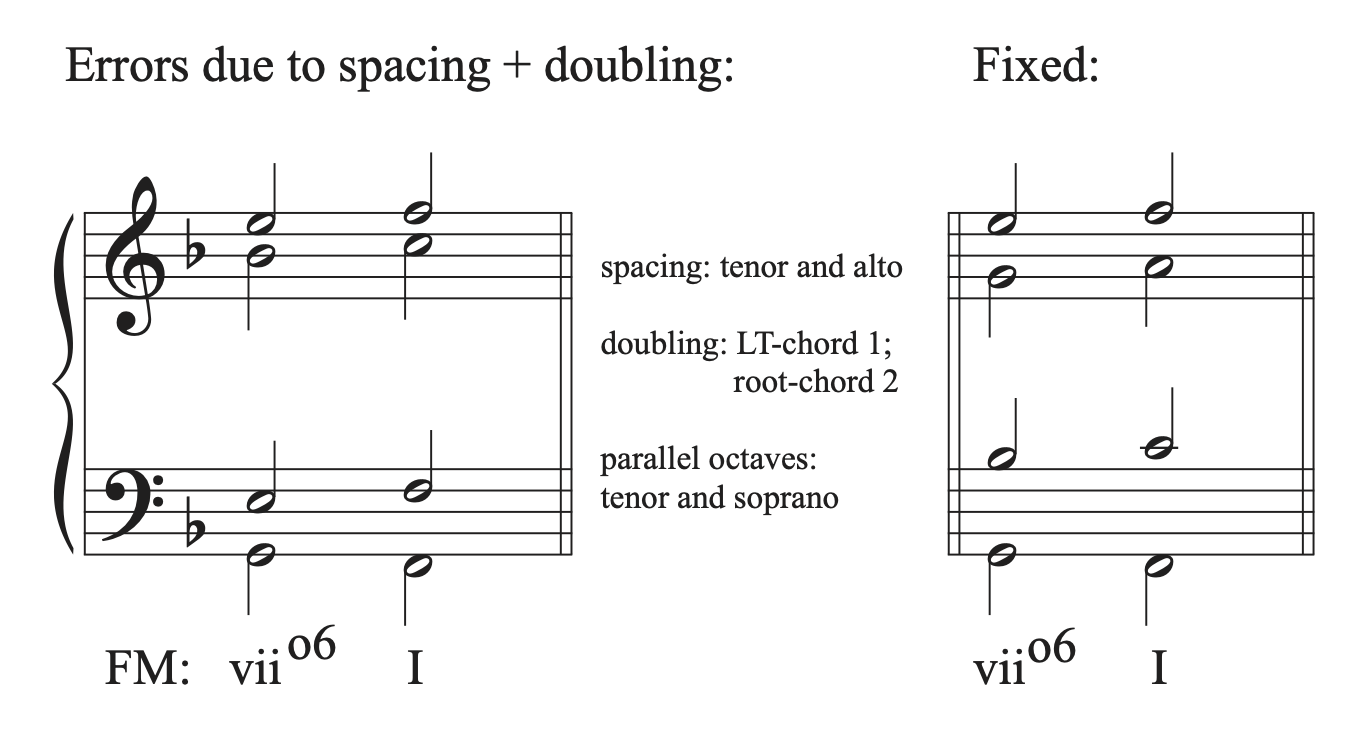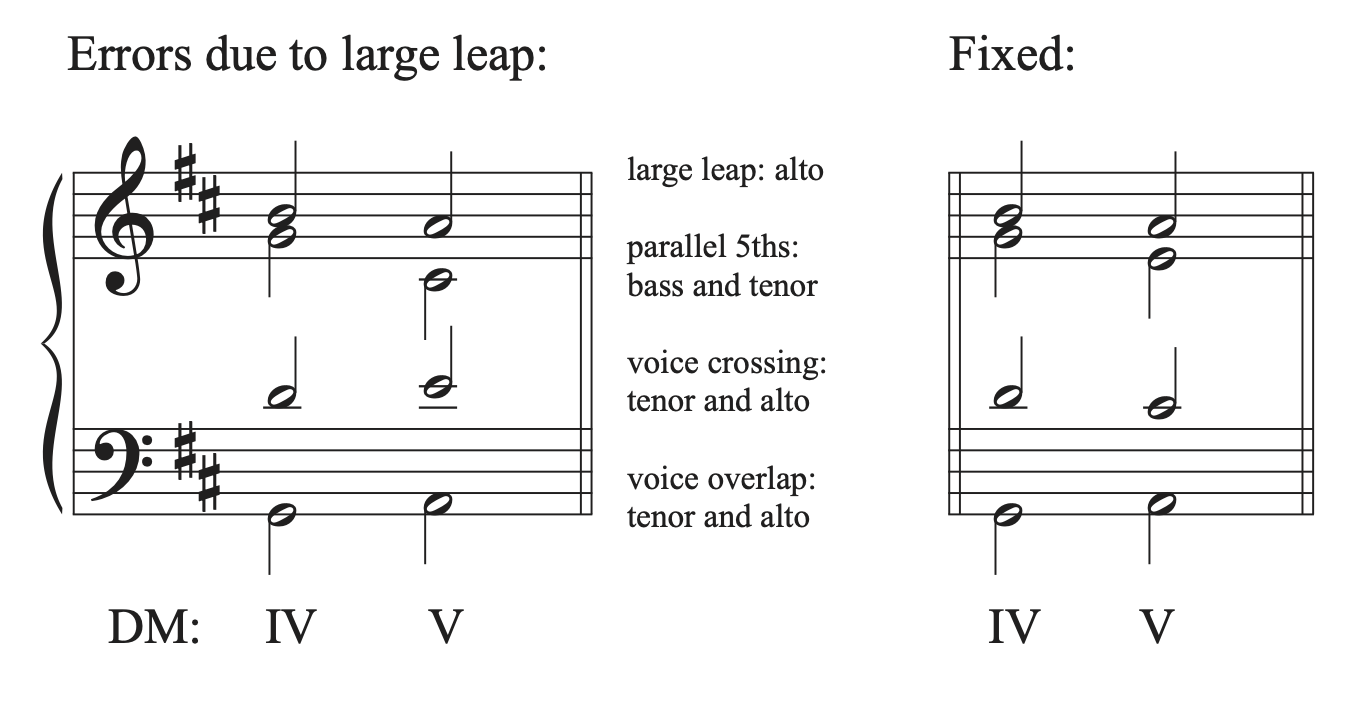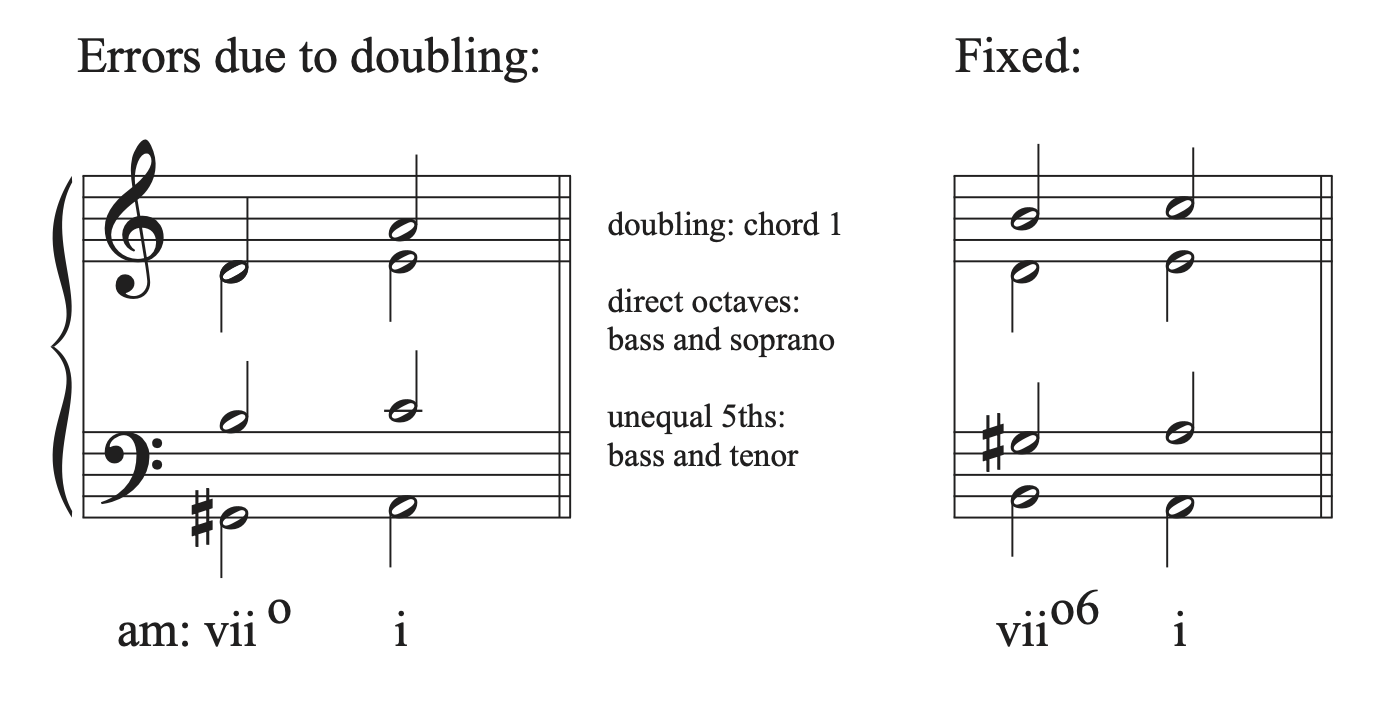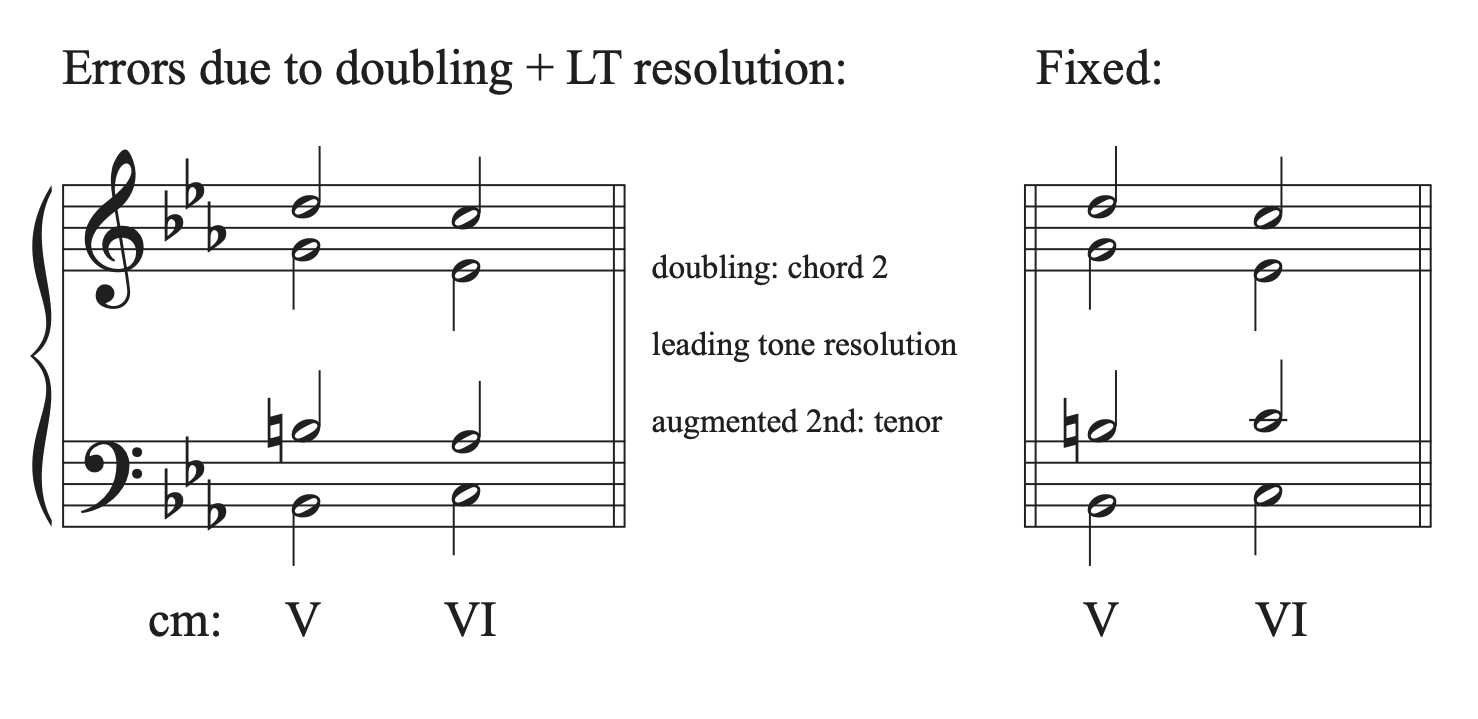10.1 Chord Voicing and Part Writing, General Principles: Theory exercises
In addition to Workbook Chapter 10.1 see the examples below.
Let’s look at some part writing examples that illustrate the voice leading principles outlined. We will see that creating one part writing error often creates more errors. After examining the cause of each problem, we will fix the errors by following good part writing guidelines.
Example 1

In this example, there is a spacing problem between the alto and tenor voices in both chords. Both chords have also been incorrectly doubled. The first chord is a diminished triad and should have the 3rd doubled. In the example, the leading tone is doubled, which we want to avoid because it is a tendency tone (and also the root of the chord instead of the third). The second chord is a root position major chord, and should have the root doubled while including the 3rd and 5th of the chord. The doubling error in the diminished chord resulted in parallel octaves when both leading tones resolved correctly to tonic. Part writing both chords with correct spacing and doubling solves all issues. The 3rd of the diminished chord should be doubled, and using only one leading tone will allow the major chord to be doubled correctly as well.
Example 2

In this example, a large leap in the alto has resulted in a number of errors. We see voice overlap when the alto voice moves lower on chord 2 than the position that the tenor voice occupied on chord 1. We see voice crossing between the alto and tenor on chord 2. We also see parallel 5ths between the bass and tenor voices. To fix these problems, the alto should follow good part writing guidelines by moving as stepwise as possible to the chord 2, eliminating the large leap. That change fixes all errors.
Example 3

The first chord in this example is a diminished chord. Diminished chords are most often placed in first inversion to avoid potential problems with part writing. This chord is in root position, and has the 5th of the chord doubled instead of having the 3rd doubled. That doubling error creates direct octaves between the bass and soprano as well as unequal fifths between the bass and tenor. Putting the chord in first inversion, doubling the 3rd of the chord, and moving each voice as stepwise as possible to avoid leaps larger than a 3rd fixes all problems.
Example 4

In this example, the leading tone does not resolve to tonic. Even though it is in an inner voice, because we are in a minor key and are connecting V to VI, moving the leading tone down to scale degree 6 creates an augmented 2nd interval in the tenor. We want to avoid any dissonant melodic intervals in a voice. Not resolving the leading tone also creates improper doubling in the second chord. When moving from V to VI, we most often double the 3rd in the VI chord instead of the root in order to avoid part writing errors. In this example, the 5th is doubled, which is an incorrect choice for a root position major chord. Resolving the leading tone to tonic creates correct doubling in the second chord and eliminates the augmented second interval in the tenor.

